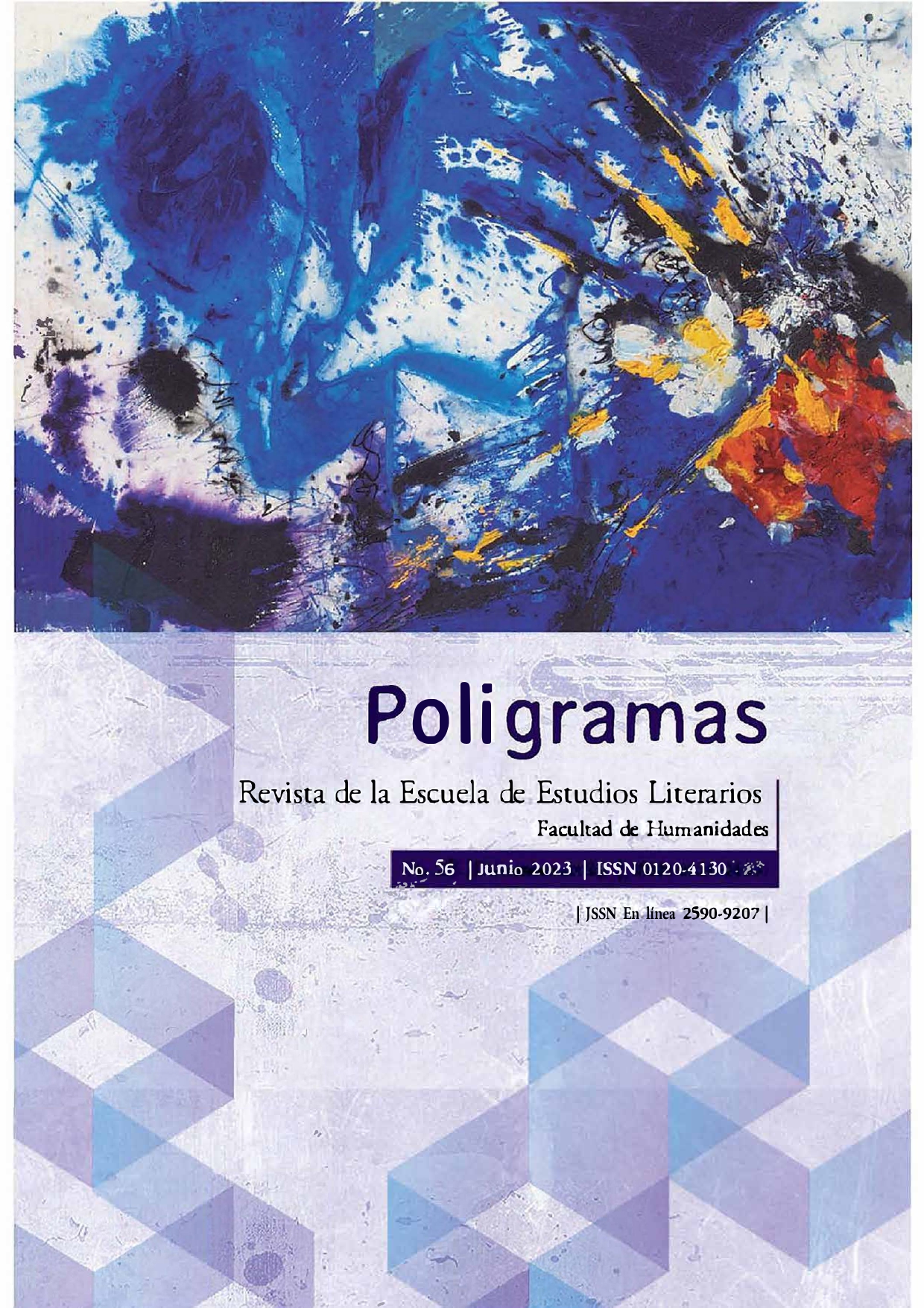Patricia Esteban Erlés’ Casa de muñecas The supernatural and the feminine object
Main Article Content
From a rewriting of the genres of the supernatural, which includes the fantastic, the horror and the unusual, Patricia Esteban Erlés, in Casa de muñecas, proposes a metaphorical construction that links the supernatural elements with concerns about the female subject, a created object socially since childhood, through a system of conditioning and preconceived images, which objectify women, that is, they reduce the individual to a manipulable object, to an image determined by their sexual role of reproduction, seduction or care. This work attempts to establish the meaning of the figure of the doll in the vision of Patricia Esteban Erlés: the elements of construction, both descriptive and metaphorical or symbolic; the intertextual references and their purpose in the aesthetic conception of the work, and the elements of elaboration of the effects projected in the texts and the resources to generate them.
- Casa de muñecas, objectification, feminism, the supernatural, Patricia Esteban Erlés
Abello Verano, Ana. “Cartografías de lo sobrenatural. Imaginería de terror gótico en la narrativa breve de Patricia Esteban Erlés”. Dicenda núm. 31 (2019) pp, 31-49. Impreso.
Álvarez Méndez, Natalia. “El discurso subversivo de Patricia Esteban Erlés en el contexto de lo fantástico feminista”. Signa, núm. 31 (2022). pp. 125-143. Impreso.
Arreola, Juan José. Obras, ant. y pról. de Saúl Yurkievich, México: Fondo de Cultura Económica. 1995. Impreso.
Baronzini, Andrea, A. Cordobes y R. Sorzini (comps.). Cuentos con espectros, sombras y vampiros. Antología. Buenos Aires: Colihue, 2004. Impreso.
Díez Cobo, Rosa María. “Telas de araña o espacios de poder femeninos en la ficción breve de Patricia Esteban Erlés”. Microtextualidades. Revista Internacional de microrrelato y minificción, núm. 10 (2021). Publicado 01-11-2021. Web. 20 Ago. 2022. https://revistascientificas.uspceu.com/microtextualidades/article/view/904
Esteban Erlés, Patricia. Casa de muñecas. México: Páginas de Espuma. 2013. Impreso.
Esteban Erlés, Patricia. Manderley en venta y otros cuentos. Madrid: Páginas de Espuma. 2019. Impreso.
Esteban Erlés, Patricia y Gonzalo Jiménez Tapia. “Entrevista”. Microtextualidades. Revista Internacional de microrrelato y minificción, núm. 3, (2018). Publicado 25-05-2018. Web. 20 Ago. 2022.
García Gutiérrez, Sandra. “Vestir al sujeto femenino: la moda goticuqui en Casa de Muñecas (2012) de Patricia Esteban Erlés”, Microtextualidades. Revista Internacional de microrrelato y minificción, núm. 10 (2021). Publicado 01-11-2021. Web. 20 Ago. 2022.
Gilbert, Sandra M y Susan Gubar. La loca del desván. La escritora y la imaginación literaria del siglo XIX. Madrid: Cátedra, 1998. Impreso.
Mora, Vicente Luis. “Vidas de mentira: funciones sustitutivas y simbólicas de las muñecas en algunos ejemplos de narrativa hispánica”, en Tropelías. Revista de Teoría de la Literatura y Literatura Comparada, número extraordinario. núm. 2 (2017). Web. 20 Ago. 2022. https://papiro.unizar.es/ojs/index.php/tropelias/article/view/2227.
Rodríguez, Adriana Azucena. Permanente fugacidad. Ensayos sobre minificción. UAM. 2020. Impreso
Sánchez Villadangos Nuria. “Lo fantástico frente a lo real y lo grotesco en los cuentos de Patricia Esteban Erlés” en Tropelías. Revista de Teoría de la Literatura y Literatura Comparada, núm. 23 (2015). Web. 20 Ago 2022. https://papiro.unizar.es/ojs/index.php/tropelias/article/view/769.
Sotelo Ríos, Georgina. “Cosificación femenina en la era del capitalismo tardío”. Ciencia administrativa, núm. 1 (2014). Web. 2 de Nov. 2022.
Todorov, Tzvetan. Introducción a la literatura fantástica, trad. Elvio Gandolfo, Buenos Aires: Paidós. 2006. Impreso.
Valadés, Edmundo. El libro de la imaginación, México: Fondo de Cultura Económica. 2009. Impreso.
Vega Rodríguez, Pilar. Maravilloso y fantástico: dos ámbitos de escritura, Madrid: Fragua. 2017. Impreso.
Zavala, Lauro. La minificción bajo el microscopio, México: Universidad Nacional Autónoma de México. 2006. Impreso.
Downloads

This work is licensed under a Creative Commons Attribution-NonCommercial-NoDerivatives 4.0 International License.





